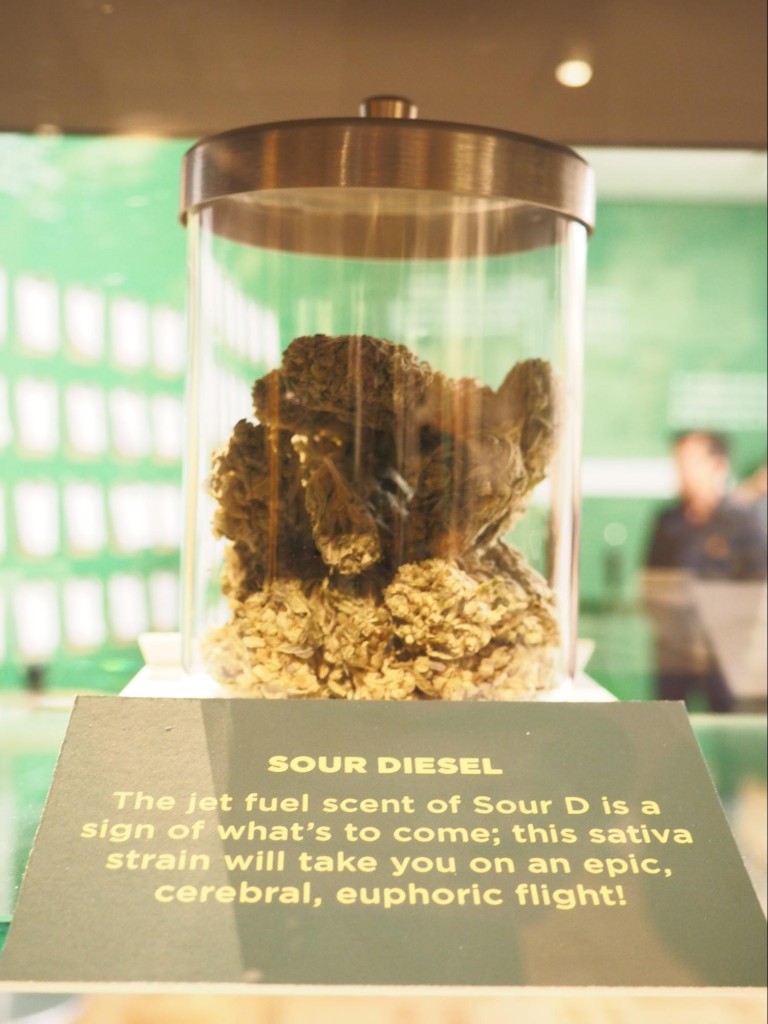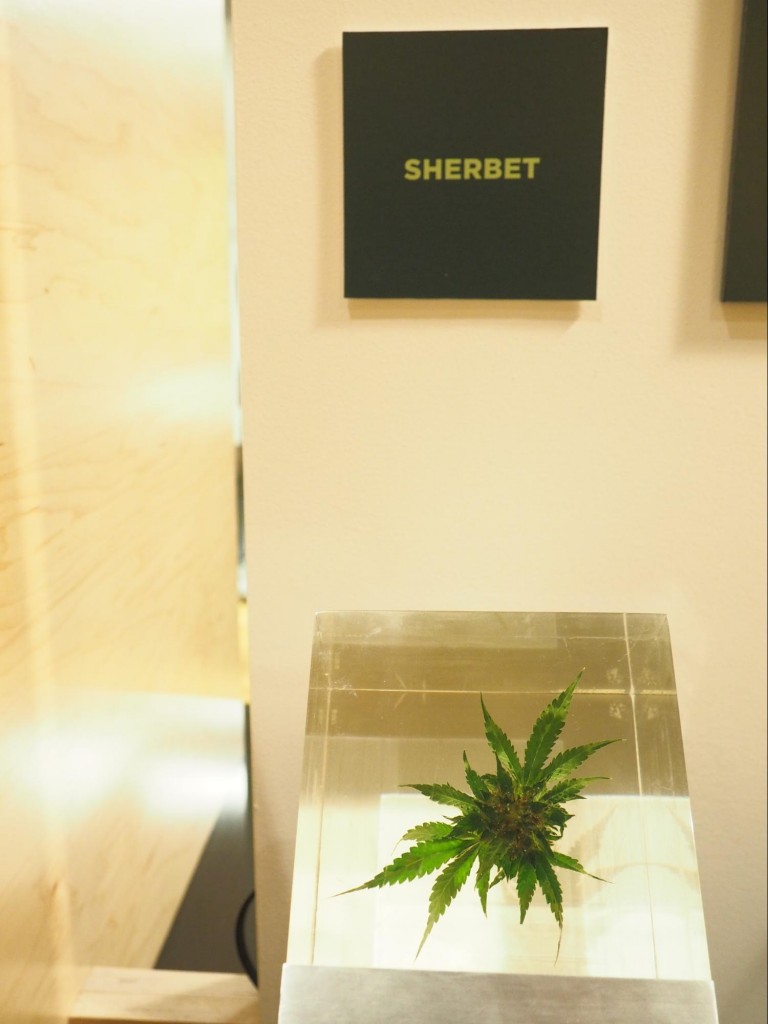I visited the Oakland Museum of California where, in the Grand Hall, there is a full exhibit engaging visitors in a dialog about the history, current status and culture of cannabis legalization in California. A glass case displaying four live potted plants stands at the entrance. From there the exhibit extends into areas of focus relating to spirituality, creativity, recreational use, political status and history, medicinal use and conversations our culture has had with kids about marijuana (this part of the exhibit included a reel of old anti-pot commercials). Through this exhibit, anyone can engage with learning about cannabis, legally.
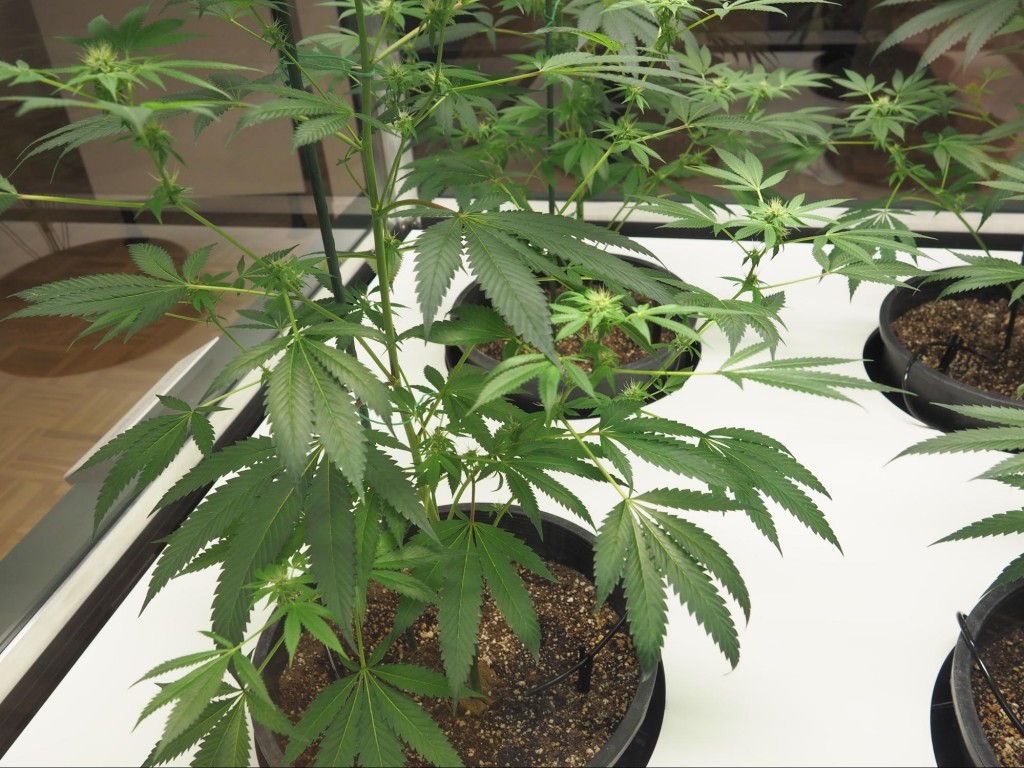
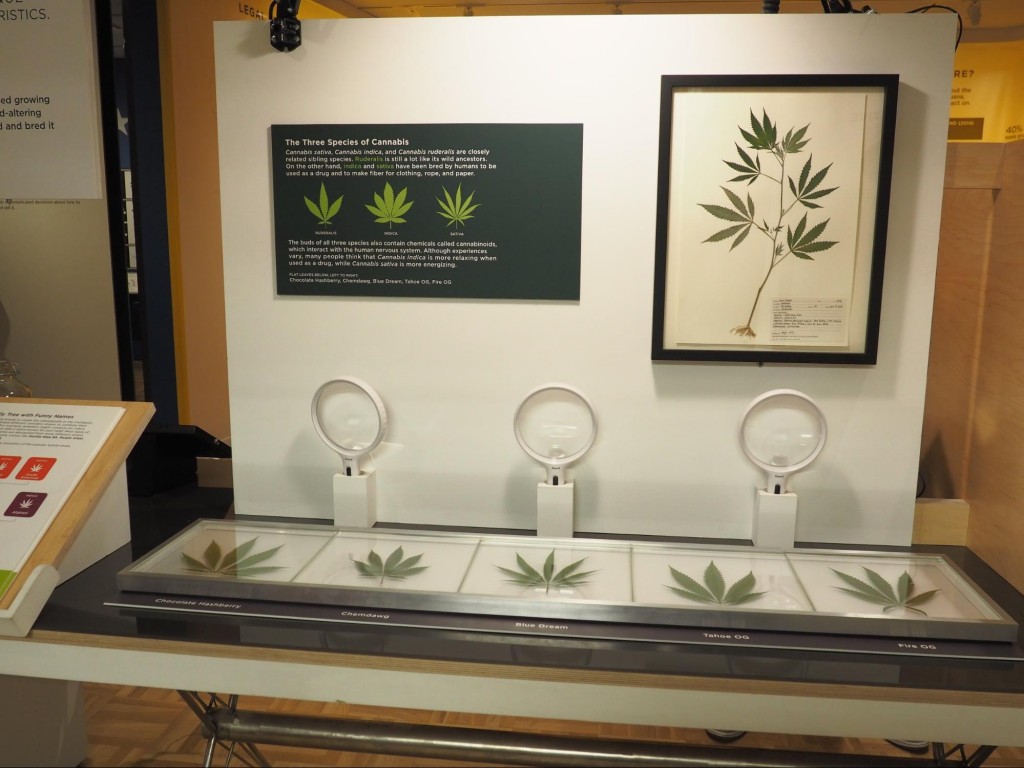
In the center of the hall was a display showing different varieties and types of cannabis, giving visitors a chance to examine the cannabis as closely as legally allowed, without actually touching the plant.
The exhibit was built to be somewhat interactive. Participants could use a magnifying glass to look at various strains of pot leaves up close; a beautiful flower encased in acrylic was on display along with jars of trimmed buds. Buds were available to smell in sealed containers with holes, allowing visitors to sensorily experience different cannabis varieties through the distinct scents. There was also a ‘clean box’ where you could put your hands into gloves, and handle the pot leaves.

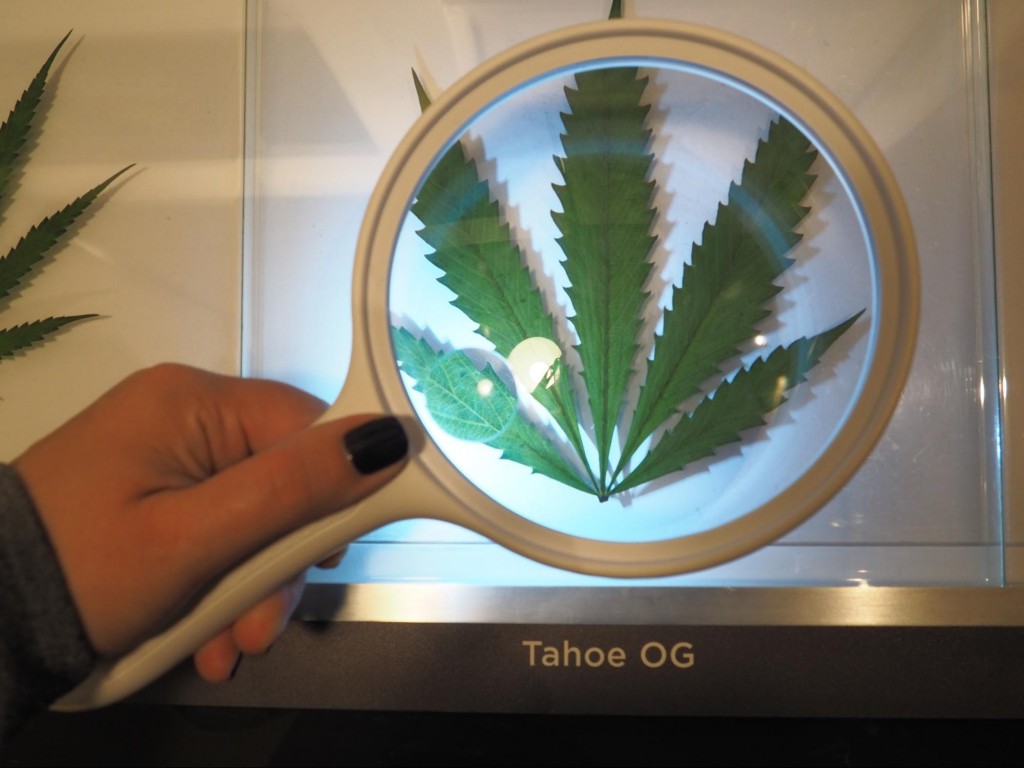
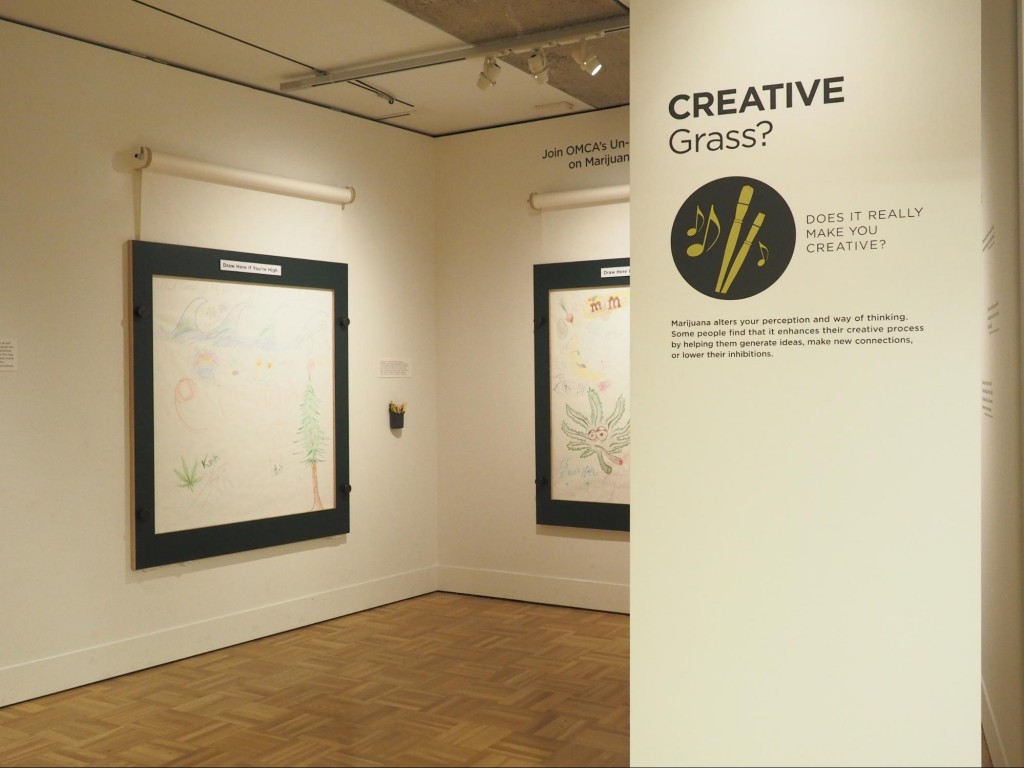
There were a few writing prompts. One addressed the shift in policy and public opinion that California has seen in the last decade. There was a confessional booth where you could step inside, pull the curtain and write a private confession related to cannabis. Some of these confessions were on display. |
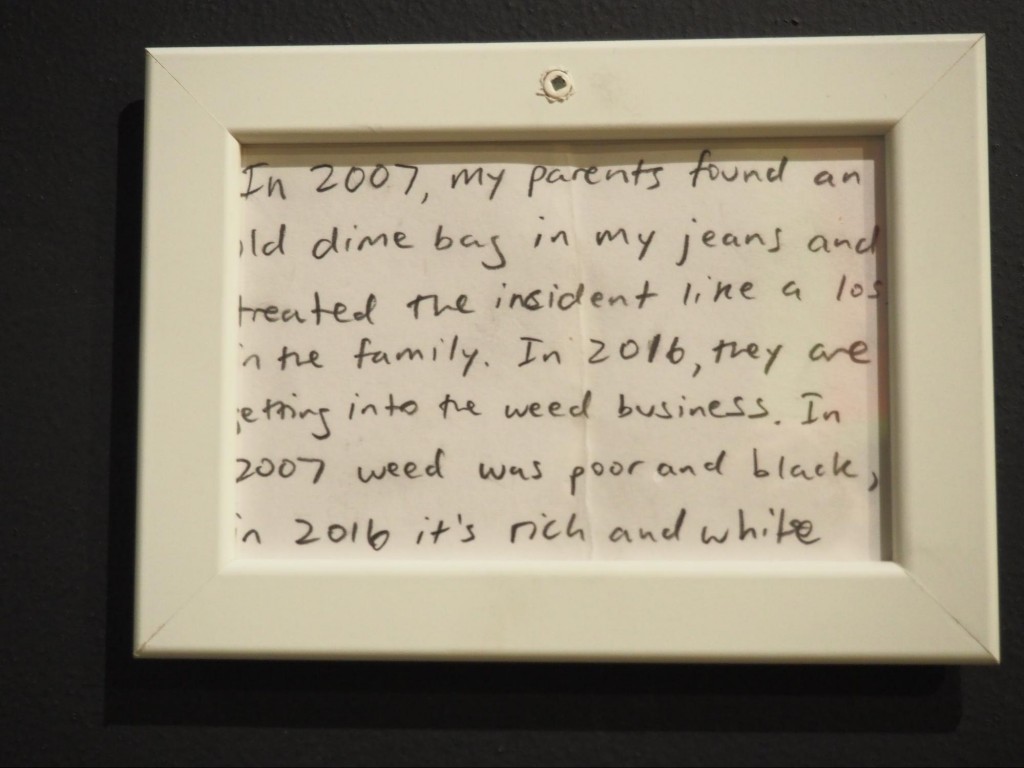
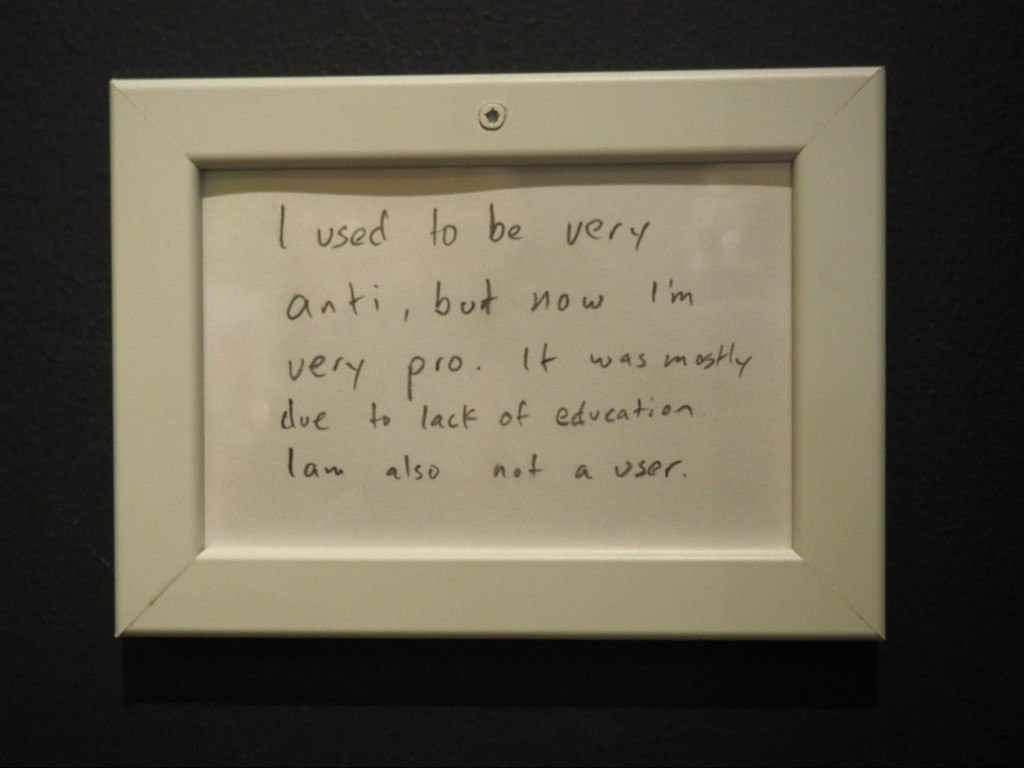
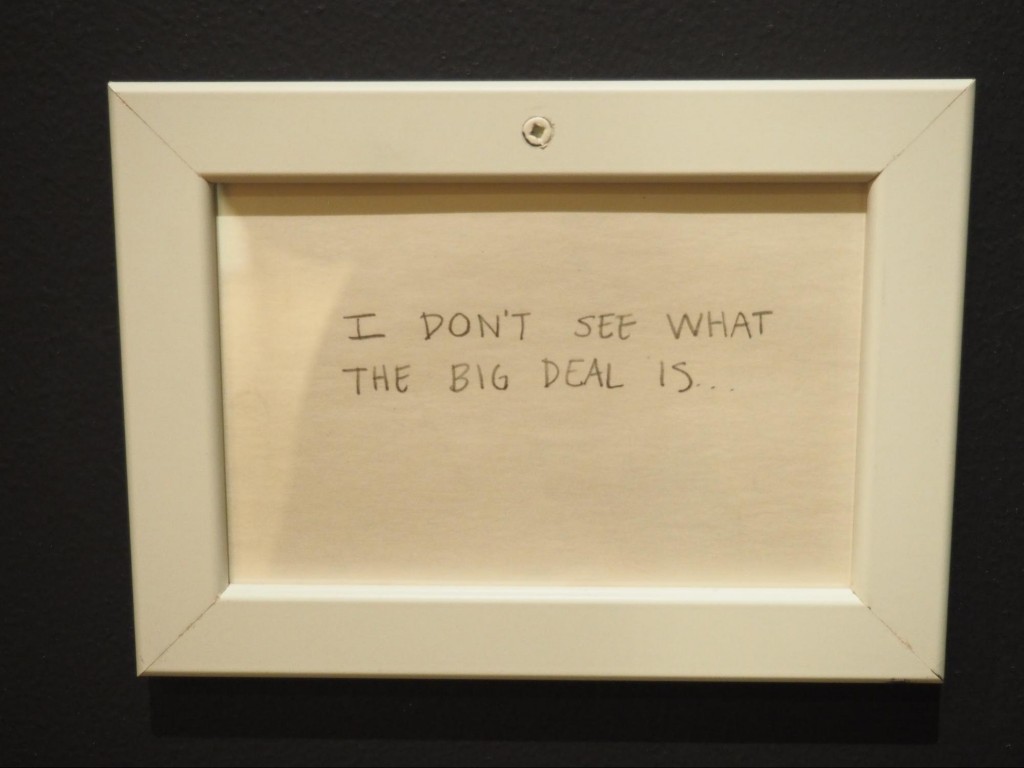
The exhibit also drew out points where legalization meets with civil liberties, emphasizing prohibition era initiatives such as the war on drugs and the D.A.R.E. program, which instituted a prohibition drug education message in public schools. This also pointed to extreme disparity in California neighborhoods when it comes to enforcement of marijuana laws. On the interactive side, visitors were invited to place a dot and ‘vote’ on how they’d like to see legalization proceed.
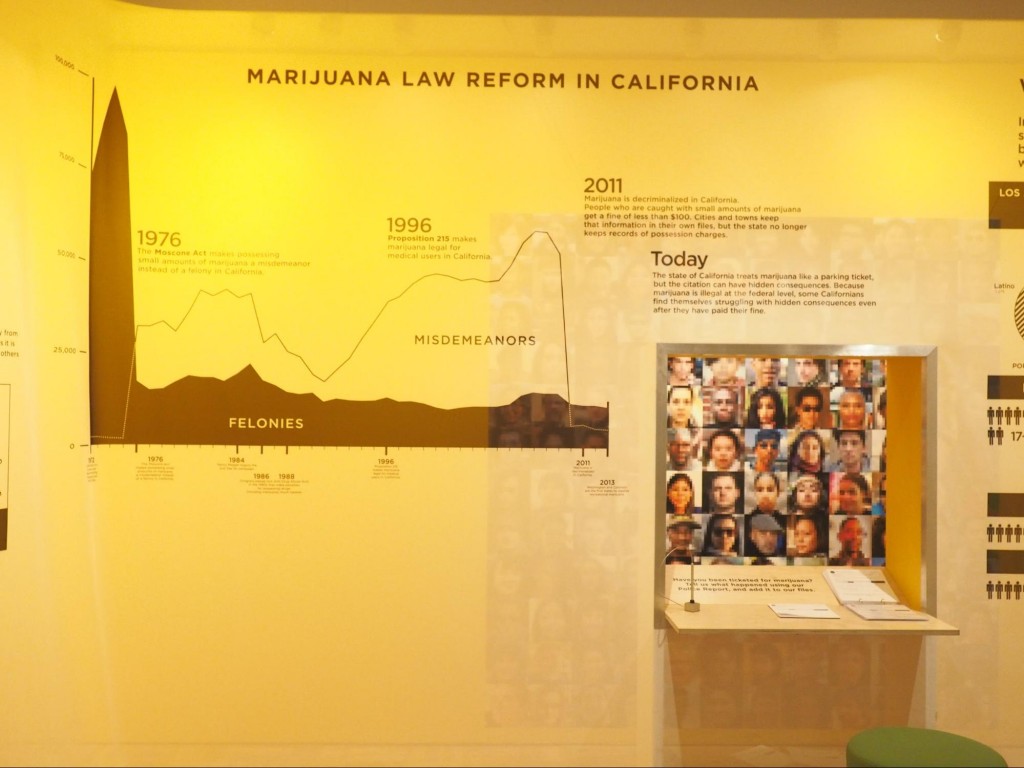
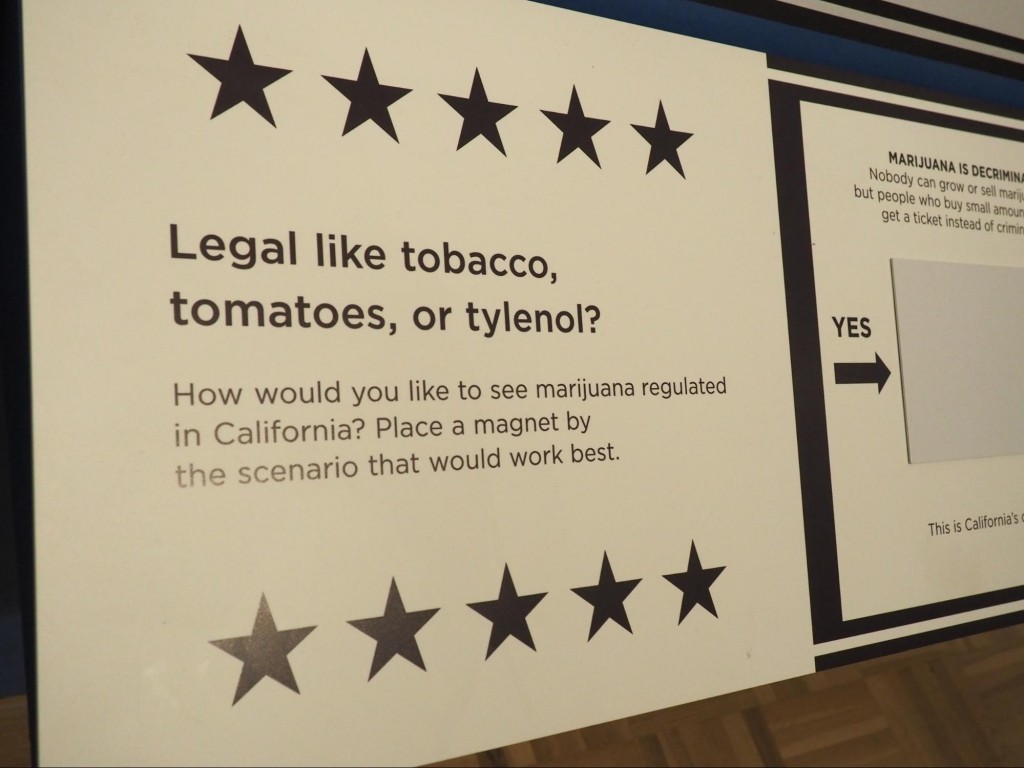
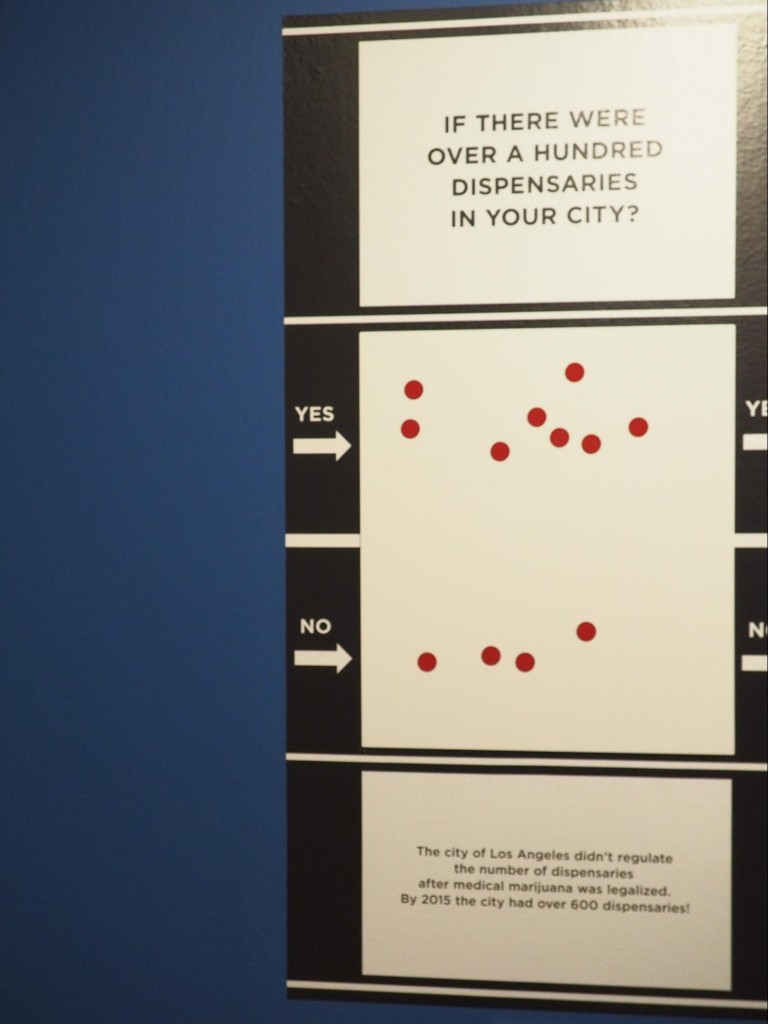
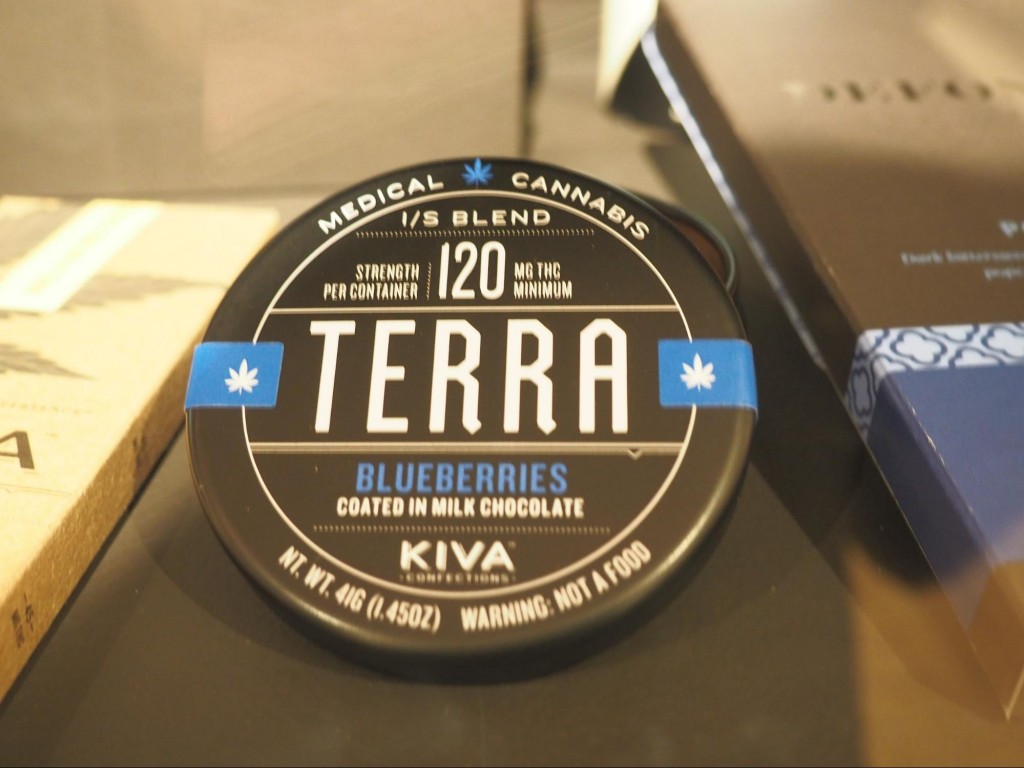
On the medicinal side, there were some examples of what cannabis as ‘medicine’ can look like, for example, these cannabis infused chocolate covered blueberries:
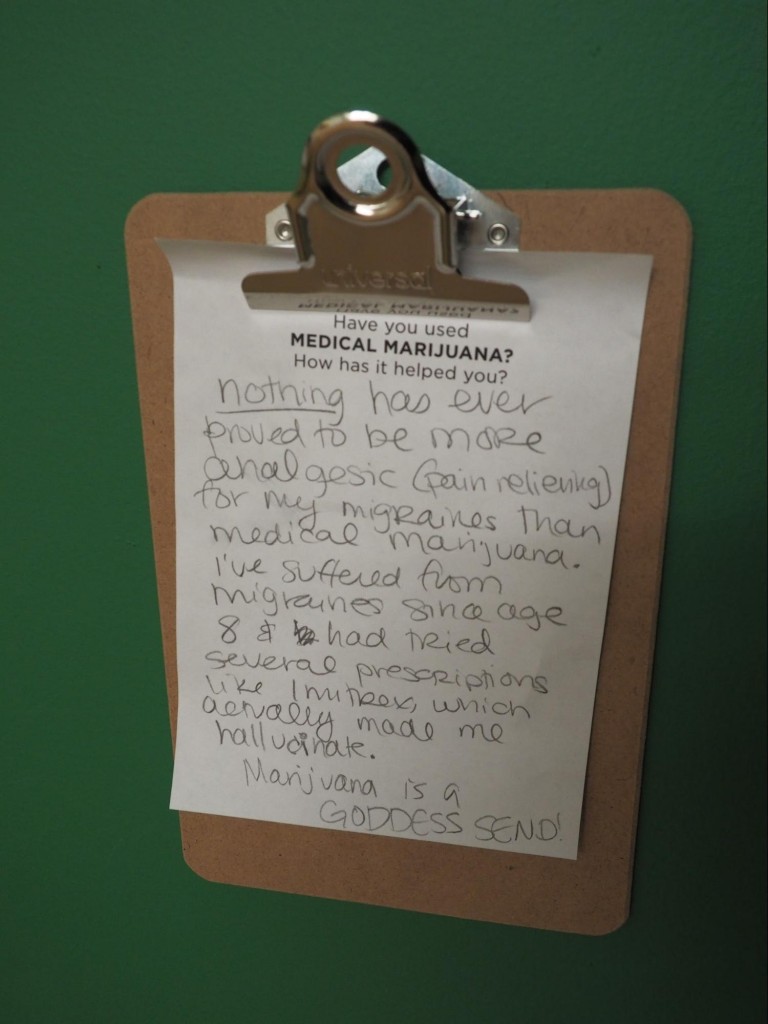
Part of the ‘recreational’ exhibit, this feels to me like an altar to cannabis culture.


A seven minute video interviews California residents who view cannabis in a spiritual light, including devotees to ‘the most high’ and nuns who cultivate a relationship with the cannabis plant as though it were the most sacred of all things.

There was also a conversation space: two round tables with chairs set up in the center of the room encouraging dialog, conversation and reflection about this exhibit and about cannabis in general.
I sat down and found myself engaged in a great conversation with two people, a Northern California activist and an advocate from the Los Angeles area, about many topics including the health benefits of cannabis, history of hemp, distinguishing characteristics of a ‘male’ or ‘female’ plants, and how the public can benefit from broad legalization of this plant.
This is one area of focus for me right now, bringing public education about cannabis up to speed with legalization. For decades the message about pot has been that it’s criminal, dangerous, addictive and can lead to abuse behavior and problems in life. Legalization for medical marijuana is on the books in 25 states of the union right now because the opposite is believed to be verifiably true. Cannabis is medicinal, alleviating chronic pain, easing nausea, treating depression and anxiety. It is currently being studied for its effects in treating PTSD, among many other prescribed uses. Recreational legalization is also moving forward as more statistics and studies come forward showing how generally safe responsible recreational use can be. The key to responsible use? Information, education, awareness of the right set and setting for cultivating a direct awareness of your own level of comfort and engaging in respectful cannabis consumption.
What is the public educational message that fits with the spirit and intent of legalization? This exhibit does a great job at encouraging dialogue in this direction, looking at the many aspects of how cannabis interacts as a part of our culture – spiritually, recreationally, politically, in our homes and neighborhoods, and medicinally.
You can visit this exhibit now through September 2016. From the Lake Merritt BART station head Northeast on 9th street towards 10th street (1 block walk from the BART station and you’re there!). TIP: Friday’s between 5p-10p admission is half-price. Admission includes access to this exhibit and the whole museum.
@OaklandMuseumofCalifornia #AlteredState #Cannabis #MedicalMarijuana #legalizeitiwilladvertiseit
